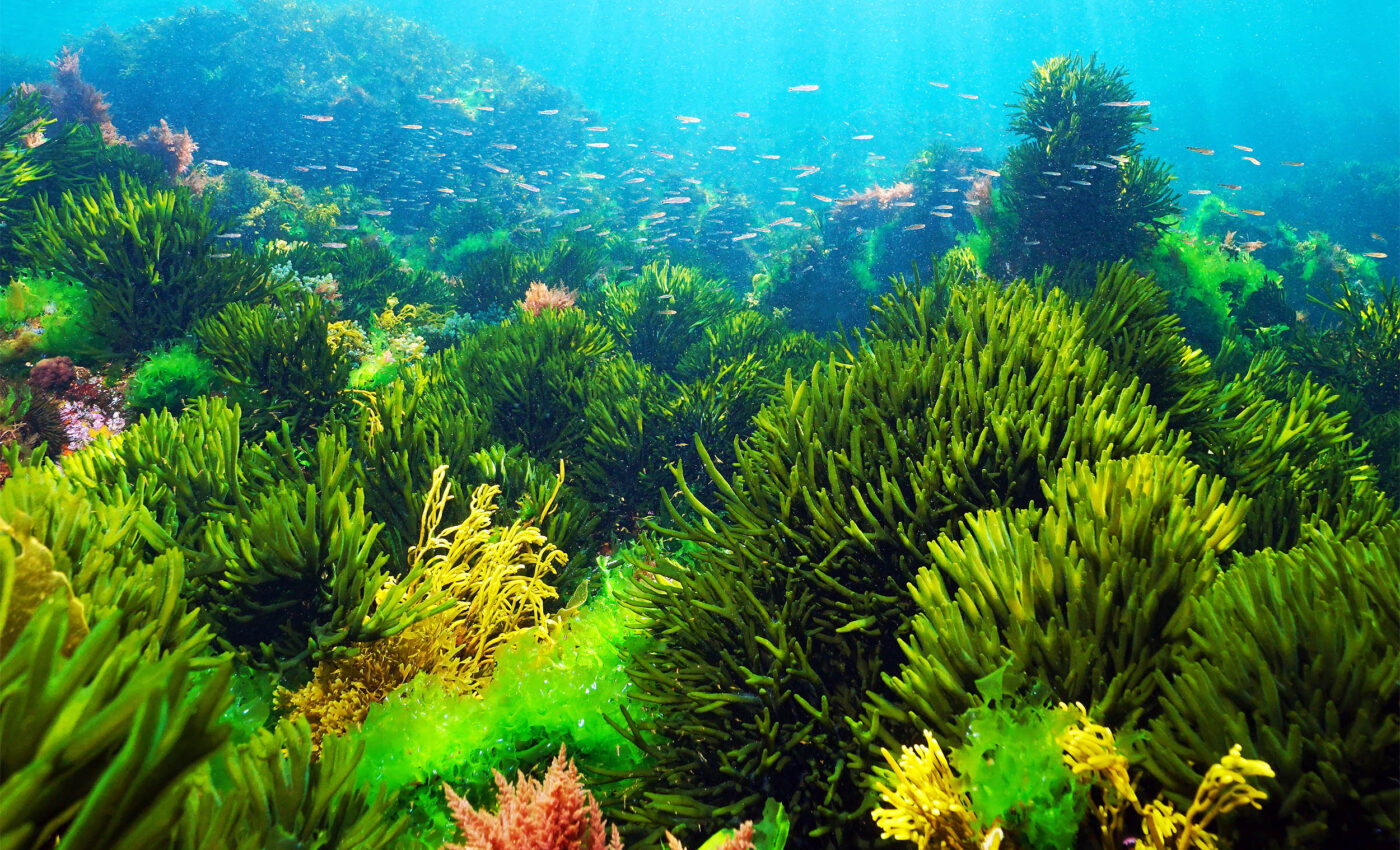
Marine algae genes used to boost crop yields in land plants
Scientists have identified the gene that allows marine algae to produce a unique form of chlorophyll, leading to significant advancements in agricultural and biofuel production.
The research, spearheaded by UC Riverside assistant professor of bioengineering, Tingting Xiang, and published in Current Biology, sheds light on a long-standing mystery in the scientific community regarding the molecular processes behind the algae’s ability to thrive in aquatic environments.
Unsung heroes of our oceans
Marine algae are vital to our planet’s ecosystem, generating half of the oxygen we breathe and forming the base of numerous food chains that include fish, mammals, and humans.
“It generates even more oxygen than plants on land. And they feed huge food webs, fish that get eaten by mammals and humans,” said Xiang. “Despite their global significance, we did not understand the genetic basis for the algae’s survival, until now.”
The study marks a pioneering achievement by demonstrating that a terrestrial plant, specifically tobacco, can be genetically modified to produce marine chlorophyll.
This alteration allows the plant to absorb a broader spectrum of light, potentially leading to improved growth rates. This innovative approach could theoretically apply to any land plant, offering a new pathway to enhance crop yields on limited land resources.
Marine algae and the science of chlorophyll
Chlorophyll plays a critical role in photosynthesis, the process by which plants convert light into energy. While terrestrial plants typically produce chlorophylls a and b, marine algae and kelp produce chlorophyll c.
This type of chlorophyll allows them to utilize the blue-green light that penetrates ocean water, a capability attributed to the unique absorption properties of chlorophyll c.
“Chlorophylls b and c absorb light at different wavelengths,” Xiang explained. “The ocean absorbs red light, which is why it looks blue. Chlorophyll c evolved to capture the blue-green light that penetrates deeper into the water.”
Biofuel production and environmental impact
The implications of this research extend beyond agriculture into the realm of biofuel production. By genetically engineering certain algae species to produce chlorophyll c, their efficiency in utilizing light can be enhanced, potentially increasing the biomass available for biofuel production.
This discovery originated from a study on algae species symbiotic with coral, which share the sugars produced via photosynthesis with their coral hosts.
Through working with mutant algae, the researchers uncovered the gene responsible for chlorophyll c production. This unexpected find offers new insights into coral bleaching and the symbiotic relationships within marine ecosystems.
The identification of the chlorophyll c biosynthetic pathway represents a significant leap forward, not only for understanding marine ecosystems but also for addressing global challenges such as food security and sustainable energy.
Sowing seeds for the future with marine algae
Robert Jinkerson, a UCR chemical engineering professor and study co-author, emphasized the broader impact of this research, stating, “The identification of the biosynthetic pathway for chlorophyll c is more than a scientific curiosity; it’s a potential game-changer for sustainable energy and food security.”
In summary, this pioneering discovery of the gene enabling marine algae to produce chlorophyll c marks a pivotal moment in both agricultural and environmental sciences.
By unlocking the genetic secrets of these aquatic powerhouses, researchers have developed a method for enhancing crop yields and more efficient biofuel production, while offering a beacon of hope in the fight against climate change.
This scientific achievement transcends the confines of the ocean, promising a future where food security and sustainable energy are within closer reach, and illustrating the profound impact that understanding and harnessing nature’s intricacies can have on our world.
More about marine chlorophyll and algae
As discussed above, marine chlorophyll stands as a testament to the intricate and fascinating processes that govern life beneath the waves. This pigment, crucial for photosynthesis, not only sustains marine ecosystems but also plays a vital role in maintaining the balance of our planet’s atmosphere.
Essence of marine chlorophyll
At the heart of marine chlorophyll’s significance is its role in photosynthesis, the process by which organisms convert light into energy.
Unlike its terrestrial counterparts, marine chlorophyll specializes in absorbing light in the blue-green spectrum, prevalent in ocean waters.
This adaptation enables phytoplankton, microscopic algae, and kelp to thrive, forming the foundation of marine food webs.
Catalyst for life
Marine chlorophyll does more than just fuel the growth of aquatic plants. It is instrumental in producing the oxygen we breathe, with phytoplankton contributing a significant portion of the Earth’s atmospheric oxygen.
This oxygen production underscores the interconnectedness of life, linking the health of marine ecosystems to our own survival.
Climate change warriors
Beyond oxygen production, marine chlorophyll plays a crucial role in carbon sequestration. Through photosynthesis, marine organisms capture carbon dioxide, thereby reducing the greenhouse gases that contribute to global warming.
This natural process highlights the importance of preserving marine habitats, as they are key players in the fight against climate change.
Future of marine chlorophyll and algae research
The study of marine chlorophyll is unlocking new possibilities in science and technology. From enhancing crop yields through genetic engineering to developing sustainable biofuels, the potential applications of this research are vast.
By understanding and harnessing the power of marine chlorophyll, we can address some of the most pressing challenges of our time, including food security and climate change.
In summary, marine chlorophyll is not merely a pigment but a cornerstone of life on Earth. Its ability to convert light into life-sustaining energy underpins the health of our oceans and, by extension, the well-being of our planet.
As we continue to explore the depths of the ocean, we uncover more about this remarkable substance, revealing the boundless potential of nature’s designs and their implications for our future.
The full study was published in the journal Current Biology.
—–
Like what you read? Subscribe to our newsletter for engaging articles, exclusive content, and the latest updates.
Check us out on EarthSnap, a free app brought to you by Eric Ralls and Earth.com.
—–













